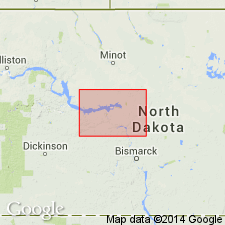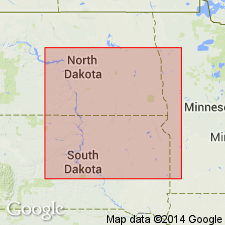
- Usage in publication:
-
- Mercer drift, till
- Modifications:
-
- Named
- Dominant lithology:
-
- Till
- Gravel
- AAPG geologic province:
-
- Williston basin
Summary:
Named as an informal "inferential" (rather than lithostratigraphic) unit of Coleharbor Formation (new) for Mercer Co, ND, Williston basin where drift is widely exposed. In ND most named drift units are generally indistinguishable on a regional scale though they can be related to a particular event in the history of a glacier. As drift units are recognized mainly on the basis of their inferred geologic history or origin, they are highly interpretive. All drift units in ND are included within the Coleharbor. Consists of three facies: lower fluvial deposit of discontinuous sandy gravel that is 3-4 ft thick; a middle till deposit (Mercer till) that is about 25 ft thick; and an upper fluvial deposit of sandy cross-bedded gravel that is up to 5 ft thick. Exposed in most of same areas as Dead Man drift (new) of Coleharbor in McLean Co, ND, but is widely exposed southwest of Missouri River trench in Mercer Co. Overlies Dead Man drift; underlies Napoleon drift (revised) of Coleharbor. Shown as "gray" till on composite section. Pre-Wisconsinan (Pleistocene) age.
Source: GNU records (USGS DDS-6; Denver GNULEX).

- Usage in publication:
-
- Mercer till*
- Modifications:
-
- Age modified
- AAPG geologic province:
-
- Williston basin
Summary:
Correlates with upper member of Horseshoe Valley Formation indicating a late Illinoian age (table 2, tentative correlation chart).
Source: GNU records (USGS DDS-6; Denver GNULEX).
For more information, please contact Nancy Stamm, Geologic Names Committee Secretary.
Asterisk (*) indicates published by U.S. Geological Survey authors.
"No current usage" (†) implies that a name has been abandoned or has fallen into disuse. Former usage and, if known, replacement name given in parentheses ( ).
Slash (/) indicates name conflicts with nomenclatural guidelines (CSN, 1933; ACSN, 1961, 1970; NACSN, 1983, 2005, 2021). May be explained within brackets ([ ]).

